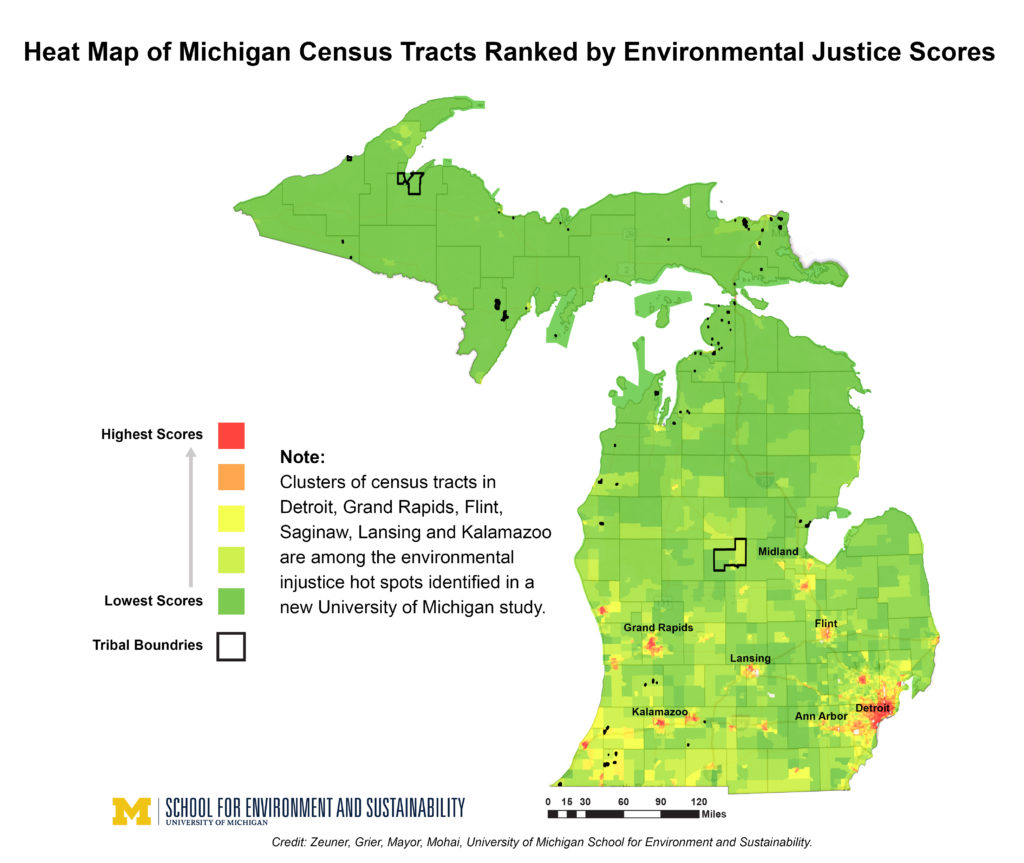A new study by a University of Michigan student team has identified “hot spots” of environmental injustice across the state. U.S. census tracts in Detroit, Grand Rapids, Flint, Saginaw, Lansing and Kalamazoo are among the hot spots identified in the study, which was released today.
-
March 19, 2019
Detroit’s expansive urban vegetation studied via satellite
University of Michigan researchers are monitoring Detroit’s vegetation from space to understand its connection to urban decline — and gaining insights into a public health threat emanating from the city’s vacant lots.
-
May 17, 2017
Bumblebee populations higher in Detroit than in some less-urbanized areas; vacant lots could be a factor
A new study of native bumblebee populations in southeastern Michigan cities found, surprisingly, that Detroit has more of the large-bodied bees than some surrounding, less urbanized locations.
-
May 17, 2017
Very young lake sturgeon and artificial spawning reefs in the Detroit and St. Clair rivers
A study of the St. Clair River by U-M scientists shows that despite river-current speeds of more than 3 feet per second, some recently hatched lake sturgeon manage to remain in the St. Clair’s North Channel, a surprising finding with implications for the siting of future spawning reefs.
-
June 21, 2016
Managing Stormwater, Beautifying Neighborhoods
On the former sites of vacant Detroit homes, University of Michigan researchers and their partners have built innovative gardens that help manage stormwater while removing neighborhood blight.
-
March 5, 2015
Turning Vacant Land into Productive Green Spaces
Alleys, vacant lots and underutilized urban spaces hold great potential for fostering more sustainable cities.


